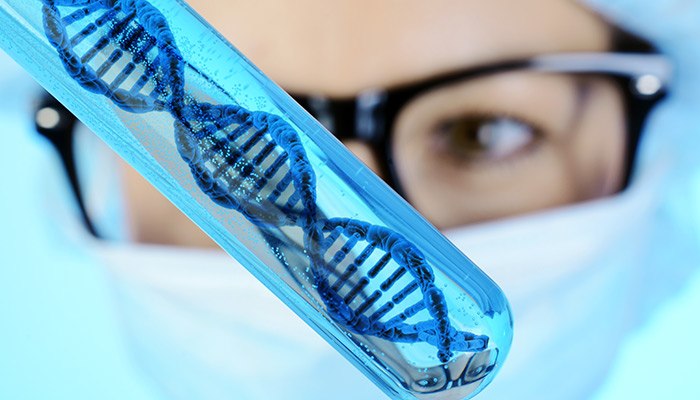Interesting title from the man who co-created a clinical genetic interpretation web-app, PureGenomics, but there is a problem. It’s the same problem that our world suffers from in so many ways. Things are viewed as all good or all bad and no middle ground is being found. Whether this is politics, religion, science or the science that is medicine, everyone is trying to discredit everyone else. Where does the truth lie?
Somewhere in between.
So what is this middle ground when it comes to genetics and MTHFR? I think it comes down to viewing genetics as a tool that helps the clinician apply leverage. This leverage is understanding how these polymorphisms, (genetic variations which change the protein structure of enzymes, hormones, and their receptors) affect function, and how this possible change in function may affect clinical outcomes. It’s understanding that this change in function is hundreds of years in the making and is not a mutation, but a change, that in some cases, is beneficial, depending on the environment the organism finds itself in. Let’s use an illustration of the most famous reindeer of all, I mean the most famous genetic polymorphism of all, MTHFR, (got to love that name).
MTHFR is the most misunderstood SNP (Single Nucleotide Polymorphism), just like Rudolf. This is an enzyme, like a lot of other enzymes, that has more than one function. It has many changes in its code, and I think there are around 25 of these polymorphisms (one base pair is exchanged with another), and like so many other genes with mutations, most of these do not affect the function of said enzyme. Two polymorphisms do affect function, but in the literature, there is lots of confusion as many researchers do not seem to understand that enzymes have more than one function, and one SNP may affect an enzyme in one function it carries out but not in another function. For example, C677T seems to affect MTHFR as it goes about creating SAMe for methylation donation for neurotransmitter generation, DNA methylation, and detox.
The other mutation, MTHFR A1289C, does not affect homocysteine but appears to be affect the enzyme more in the pathway of dopamine and serotonin generation. It seems to escape so many peoples grasp that an enzyme is like a Swiss knife, and just because the corkscrew is broken, doesn’t mean the knife cannot open a box. As an example, we cannot say the A1298C mutation is not important because it does not affect homocysteine and the diseases that arises from poor methylation, because it affects another function of MTHFR enzyme.
This is where clinicians and researchers run into problems. We fail to comprehend the context of the polymorphism. This creates frustration when we are using the wrong tool for the job, and making claims that addressing a particular mutation does something, when in actuality it does not. This creates loss of validity in a field that is highly valid and transformational to a clinical practice.
Another problem with SNP’s, and if you ever had teenagers you will understand this, their impact/behavior often is dependent on the crowd they hang out with. Not understanding this complexity, and seeing nutrigenomics as a linear equation, takes away the validity of the field and the clinicians’ claims of what intervention of a mutation will accomplish.
One case is the MTHFR gene which in the presence of adequate riboflavin has almost completely normal function even with the polymorphism at the 677 location. Often, polymorphisms/SNP’s have fail safe(s), if you will, or supporting genes, and vitamins, that help correct the decreased function of said gene, so that the organism can live, not thrive necessarily, but ultimately reproduce, which per Brian Hawkins brilliant book, “The Selfish Gene,” is what genetics is all about. If we just talk about the MTHFR gene as being the only instrument that matters, and do not see it as one instrument in an orchestra, then we are giving it too much credit. Likewise, if I were to be the violinist in said orchestra, one would also understand that an “aberration” can definitely have an effect on the overall sound, yikes! Now if said orchestra was playing for the hearing impaired, I’d be awesome! In some ways, that is what a gene like MTHFR does when looked at from a historical context.
MTHFR C677T polymorphism was a genetic advantage. That’s right, or it would not be so prevalent (At least 60-70% of us have at least one copy, of the two copies, for this mutation). Why would evolution allow such a thing? Advantage, and a big one if you live in an endemic malaria region. It helped our ancestors survive malaria. Where was this gene most common? In the Mediterranean region. What is the local diet there composed of? Lots of folate rich foods, which compensated for this less effective methylating enzyme of folate. Sweet huh? The standard American diet does not have a lot of natural folate (lots of synthetic folic acid–another paper for a later date.). This is an issue that leads to problems with a genetic advantage being turned into a disadvantage as an organism’s environment changes from its original environment to the adaption. So, what does this mean for us as we navigate this gene which has generated so much controversy?
We have to understand that we do not have it all figured out. We do know that the data is conflicting in some cases because nuances are not understood by even the researchers doing the research. A lot of researchers believe folic acid is equivalent to methyl-tetrahydrofolate which is in a paper like this, https://www.ncbi.nlm.nih.gov/pubmed/21069462?dopt=Abstract, one has to question the validity of the findings. The actual polymorphism which led to the homocysteine is not directly addressed, but rather the biomarker, homocysteine. It also looked at this polymorphism in relation to people already with cardiovascular disease and did not look at outcomes if we address this gene in prevention (when MTHFR C677T is addressed in blood pressure we see very positive outcomes and decreased risk of stroke). Then we find studies like this, https://www.ncbi.nlm.nih.gov/pubmed/27973419, which seem to support the conclusion addressing methylation is quite beneficial.
What is there to make of this confusion? Should we just throw up our hands and say let’s not look at it or try to make decisions because it’s not clear? I don’t think so. Let’s agree that literature is not completely clear on the benefit of using 5-MTHF in all diseases, but it’s clearly helpful in many diseases. We also know it is much more effective in cellular uptake and this fact is very beneficial in many preventative strategies compared to its synthetic precursor, folic acid. Is it going to be the panacea that so many people have made it out to be? No, because we are giving it to much credit, and when it is not the magic hammer people claim it to be, it allows the faulty logic by the uninitiated, that since it cannot do all things, then all the polymorphisms that can be used in clinical practice are ineffective as well. This could not be further from the truth.
We have a saying where I come from, “Don’t throw the baby out with the bath water” and this is really saying, don’t get rid of the good waiting on the perfect. We as clinicians, who so desperately want to heal, get in trouble when we create the magic hammer where everything becomes a nail. We lose credibility because we a looking for something that works on everything.
Nutrigenetics is a tool. It is incredibly effective as such, and the research supports this. Clinically, ask any psychiatrist if dosing with higher doses of Methyl-folate has not turned around a large number of refractory depressed patients. You would be hard pressed to find one not using this as a clinical tool. Is it where they start? No, nor should it be. The same goes with the functional medicine practitioner. We need to focus on what we know to be the foundations of functional medicine first. Heal the gut, address sleep, decrease stress and eliminate toxins. Then, and only then, should we be then looking at nutrigenetics to help us apply leverage in assisting the above-mentioned areas of focus. It works brilliantly when we understand its benefits, but also embrace its limitations.
Dr. Nathan Morris, MD













